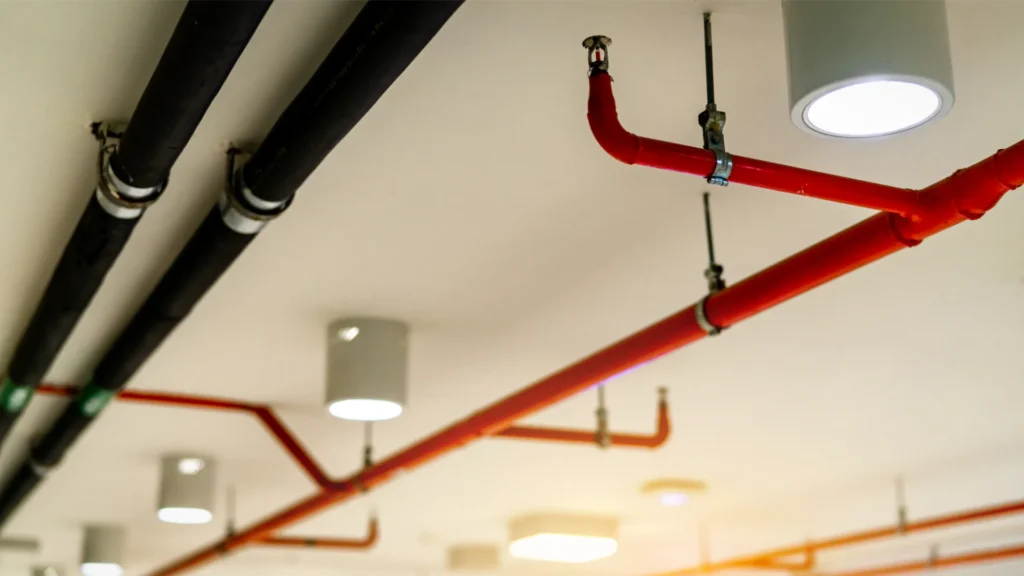Sydney’s fire safety guidelines are more than just a basic checklist. At the heart of the program is the Annual Fire Safety Statement (AFSS) which is a document that is not just a way to meet the law but also proves a building owner’s commitment to safety and responsibility. Together with the Fire Safety Certificate, it creates the basis of a structured framework that keeps occupants safe, insurers reassured, and councils confident in the security of the city’s buildings.
The reason why the annual Fire Safety Statement Is Required?
The annual fire safety statement Sydney requirement was never designed to be paperwork for the sake of completing paperwork. The requirement was created because regardless of how effective a fire protection system is built, it will only function if it’s regularly inspected, maintained and certified. It may seem like a sprinkler that was installed in the past 10 years is functioning well, but it won’t be able to function in a situation of emergency if the system hasn’t been inspected.

The AFSS insists that property owners show each year that all fire safety security measures on their property, from alarms and hydrants all the way to lighting for exits–are still up to the standards initially set by the Building Code of Australia (BCA). It is not just an inspection; it is a declaration to the public that lives are safeguarded and that the building will stand up to a major incident.
What’s the main difference between AFSS and Fire Safety Certificates?
The Fire Safety Certificate and the Annual Statement are often misunderstood by the owners, however they serve different purposes. The certificate is issued after a major upgrade or a new system is installed. The certificate confirms the new measures comply with the regulations before a property or tenancy agreement is signed. The AFSS is, on the contrary is a different matter. It’s a responsibility that is repeated that proves the identical systems meet the requirements each year following the installation.
They establish a cycle of protection when they are used together: the certificates confirm that the safety systems were correctly installed, and the annual statements prove that the safety systems have been maintained over the lifetime of a building. If you fail to take care of either of the steps can break the entire chain.
The responsibility of the building owner
One of the distinctive features of the AFSS procedure in New South Wales is that it places ultimate responsibility on the property’s owner. The AFSS system is different from other compliance systems that allow problems to be categorized into major and minor. If any one of the measures fails then the entire document cannot be issued with any validity.
The owners have to take an active role. They need to organize inspections, employ certified experts, schedule repairs, and register documents with council–all while meeting strict deadlines. For strata and commercial landlords, this means that they must coordinate with each other. committees, this task involves coordination between tenants contractors, insurers, and tenants. While it can be challenging, the structure was created to ensure the safety of tenants will never be affected.
The Effects of AFSS Beyond Sydney
Beyond legal compliance, the AFSS has broader implications. Tenants typically inquire about a building’s current safety statement in deciding if they wish to lease the space, and insurers typically require a copy prior to deciding on coverage. A current Annual Fire Safety Statement can impact the value of a property or tenant trusts, and even insurance rates.
Councils can be reassured that the tens of thousands of Sydney buildings are monitored regularly. This means that the fire department can be more confident in the system’s ability to operate during emergency situations. This helps reduce the risks for both the firefighters and the people who live in them. The AFSS does more than just guard individual buildings, but also makes a safer city.
Conclusion: AFSS is a Standard of Trust
The annual statement on fire safety Sydney requirements may appear to be a bureaucratic hurdle however, in reality, it is a standard of confidence. The declaration demonstrates that the safety of your home isn’t just left to the chance. It shows the reliability of equipment, and that homeowners are accountable for the well-being of their inhabitants. This certificate, when used with the Fire Safety Certificate completes the process of confirming the use of safety measures and their ongoing performance.
For property owners, the lesson is clear: the AFSS is more than an annual deadline. It’s an investment in safety as well as accountability and trust in the community. In the ever-growing urban landscape of Sydney, where thousands rely on secure and efficient buildings, that dedication is what makes the AFSS important.